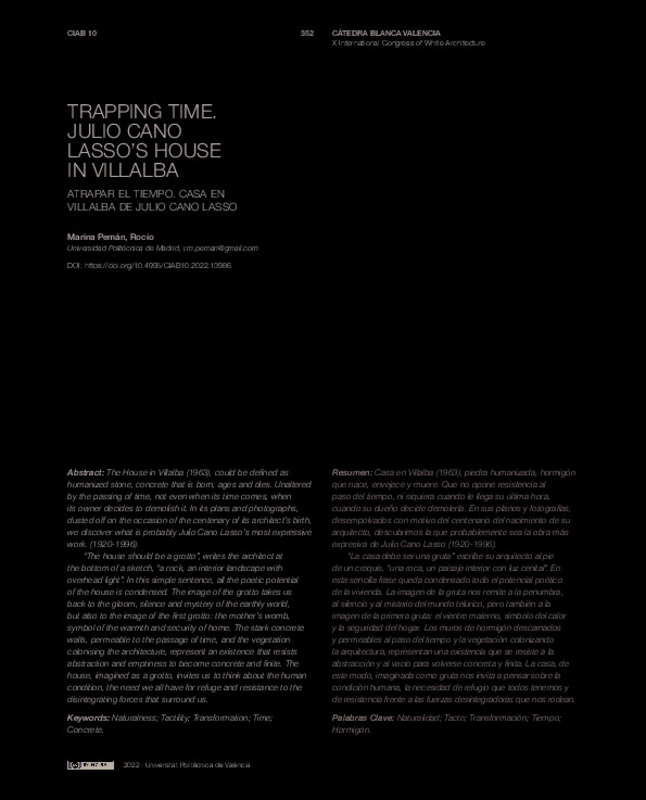JavaScript is disabled for your browser. Some features of this site may not work without it.
Buscar en RiuNet
Listar
Mi cuenta
Estadísticas
Ayuda RiuNet
Admin. UPV
Atrapar el tiempo. Casa en Villalba de Julio Cano Lasso
Mostrar el registro completo del ítem
Marina Pemán, R. (2022). Atrapar el tiempo. Casa en Villalba de Julio Cano Lasso. En CIAB 10. X Congreso internacional arquitectura blanca. Editorial Universitat Politècnica de València. 352-361. https://doi.org/10.4995/CIAB10.2022.13986
Por favor, use este identificador para citar o enlazar este ítem: http://hdl.handle.net/10251/186105
Ficheros en el ítem
Metadatos del ítem
| Título: | Atrapar el tiempo. Casa en Villalba de Julio Cano Lasso | |
| Otro titulo: |
|
|
| Autor: | Marina Pemán, Rocío | |
| Fecha difusión: |
|
|
| Resumen: |
[EN] The House in Villalba (1963), could be defi ned as
humanized stone, concrete that is born, ages and dies. Unaltered
by the passing of time, not even when its time comes, when
its owner decides to demolish it. In ...[+]
[ES] Casa en Villalba (1963), piedra humanizada, hormigón que nace, envejece y muere. Que no opone resistencia al paso del tiempo, ni siquiera cuando le llega su última hora, cuando su dueño decide demolerla. En sus planos ...[+]
|
|
| Palabras clave: |
|
|
| Derechos de uso: | Reconocimiento - No comercial - Compartir igual (by-nc-sa) | |
| ISBN: |
|
|
| Fuente: |
|
|
| DOI: |
|
|
| Editorial: |
|
|
| Versión del editor: | http://ocs.editorial.upv.es/index.php/CIAB/CIAB10/paper/view/13986 | |
| Título del congreso: |
|
|
| Lugar del congreso: |
|
|
| Fecha congreso: |
|
|
| Tipo: |
|








